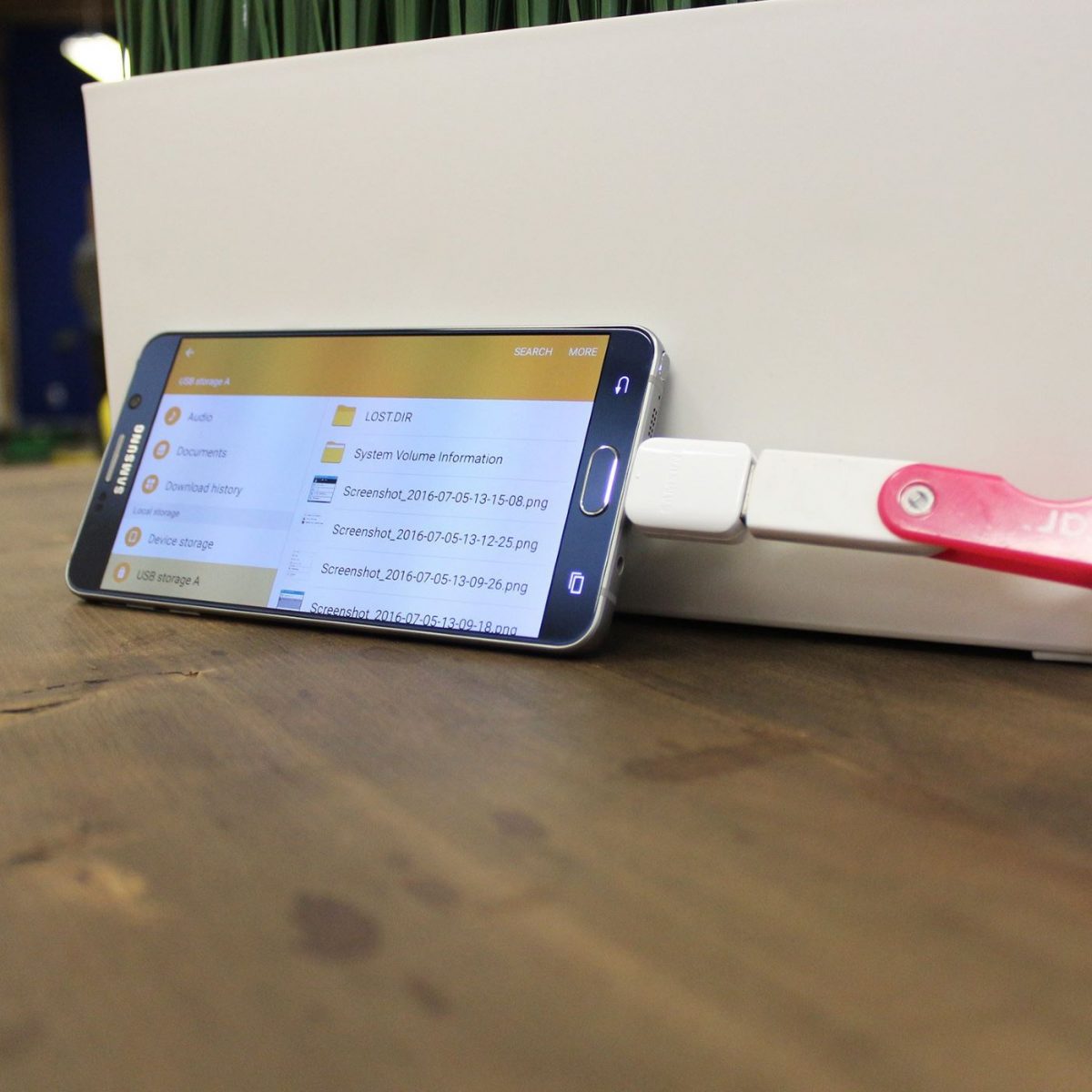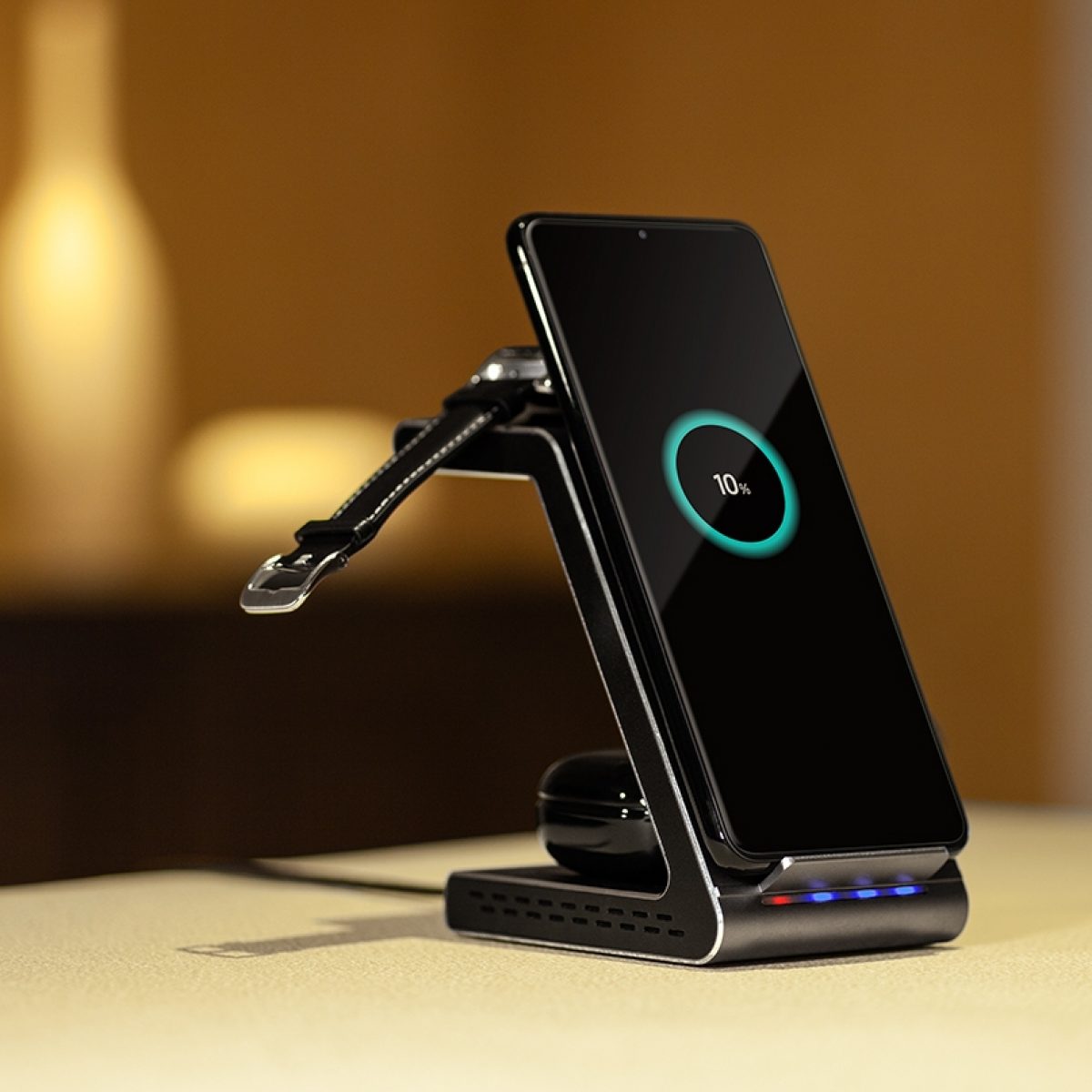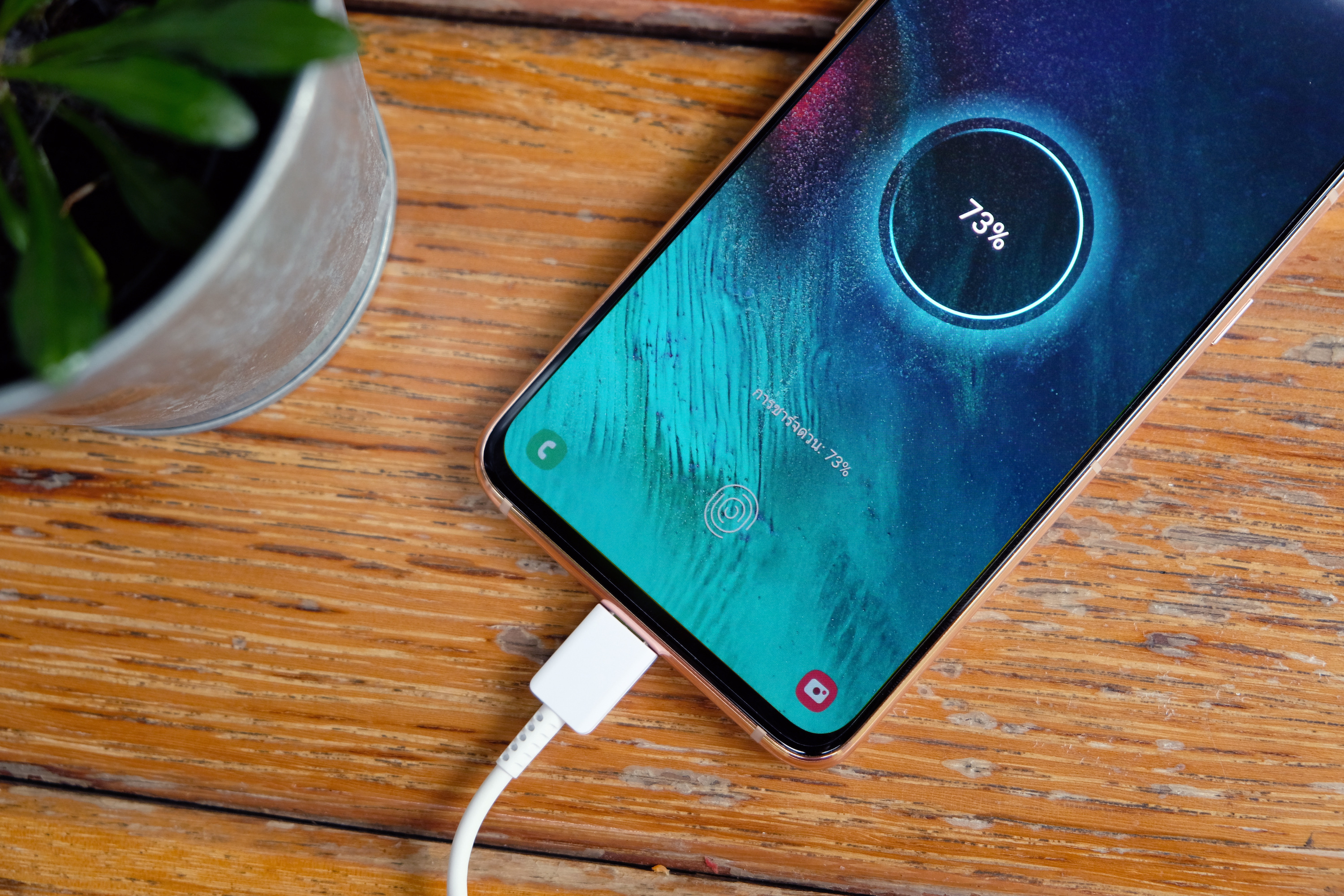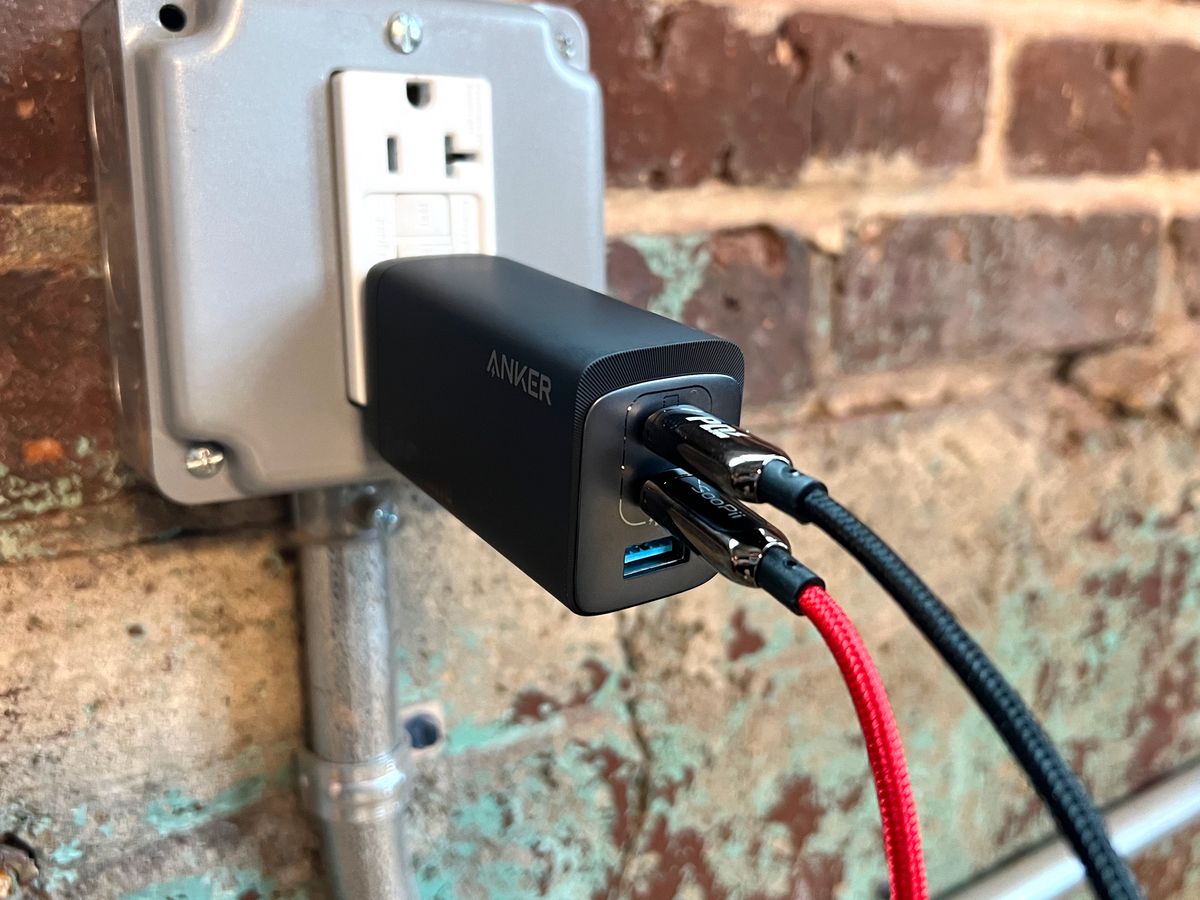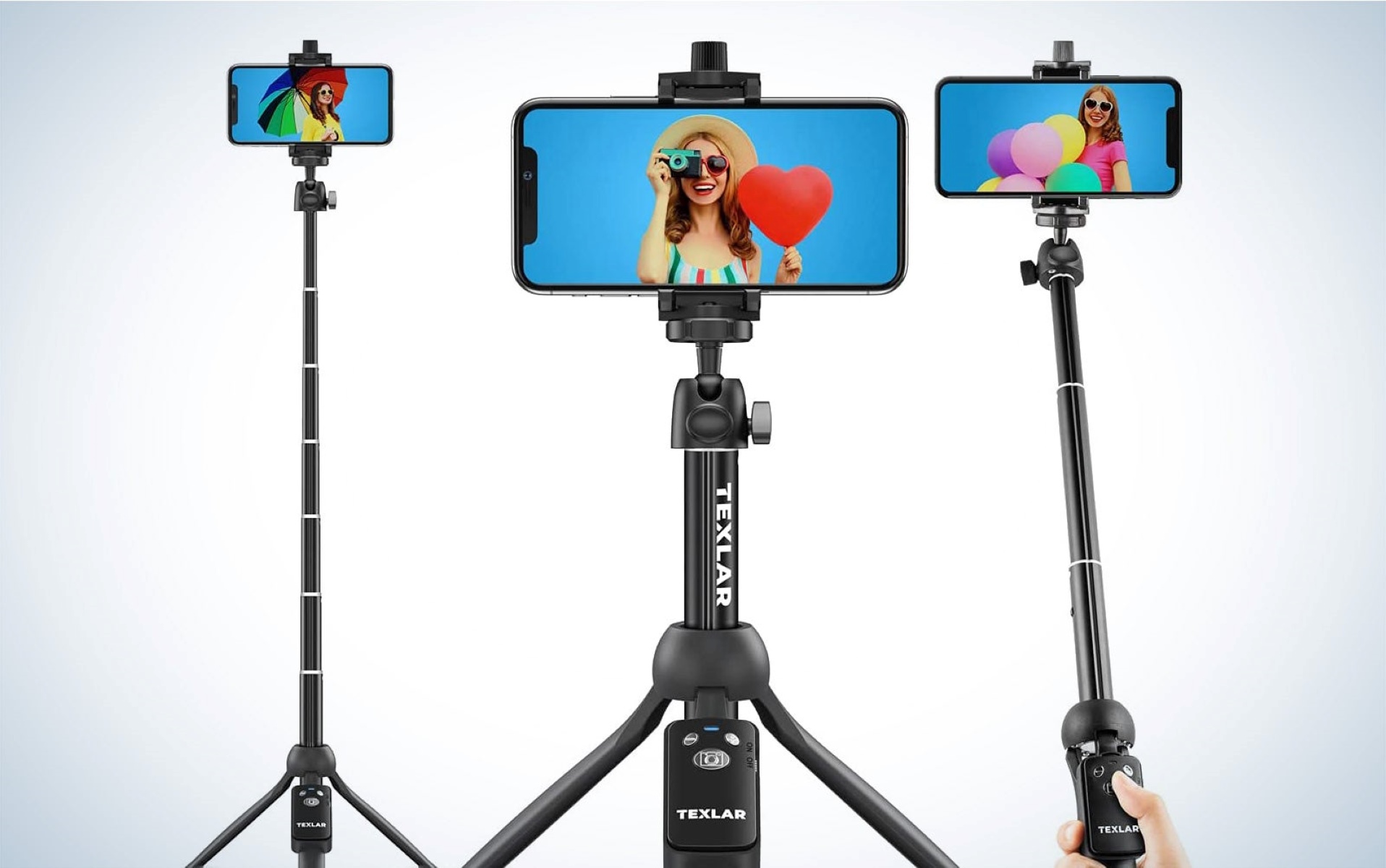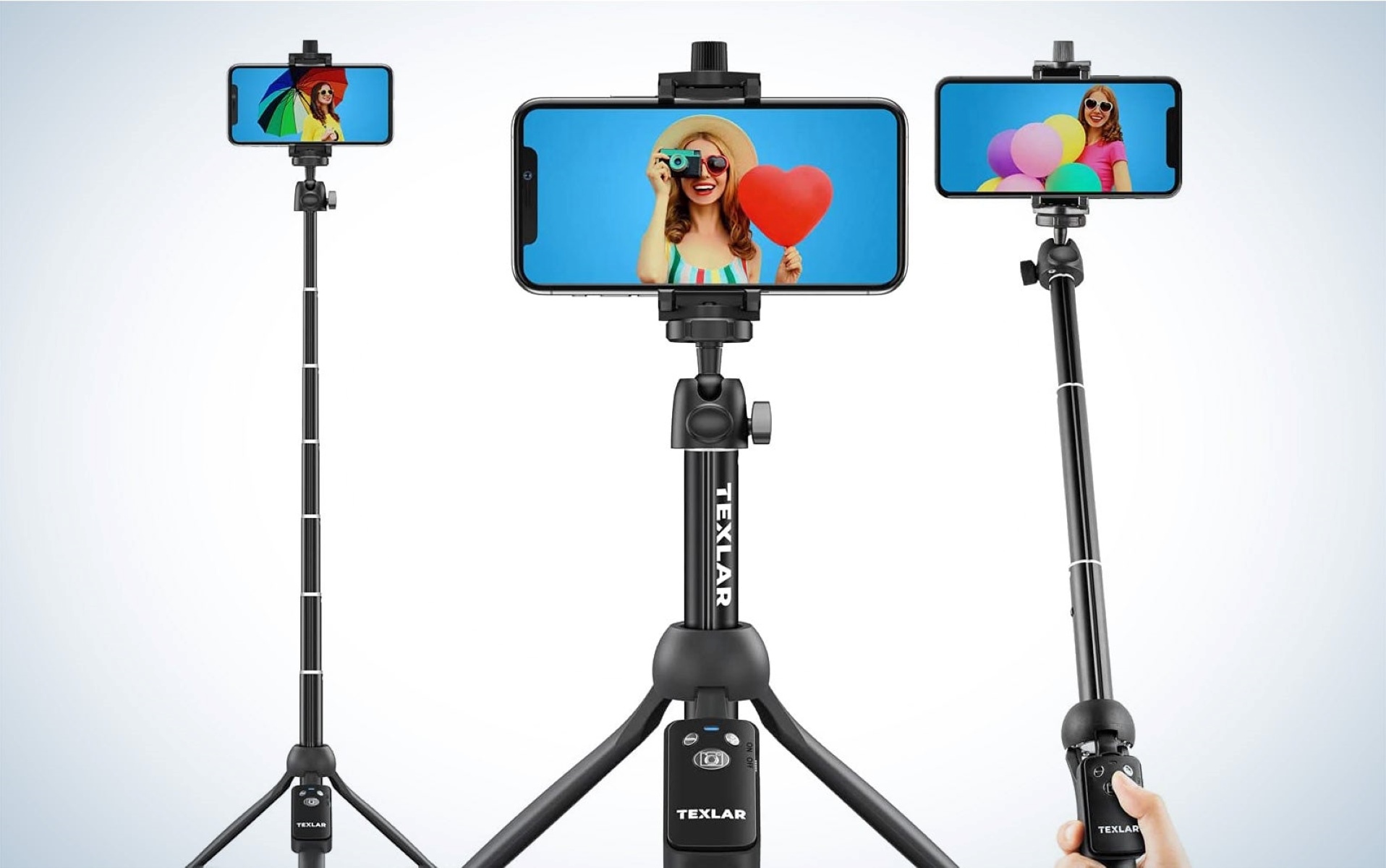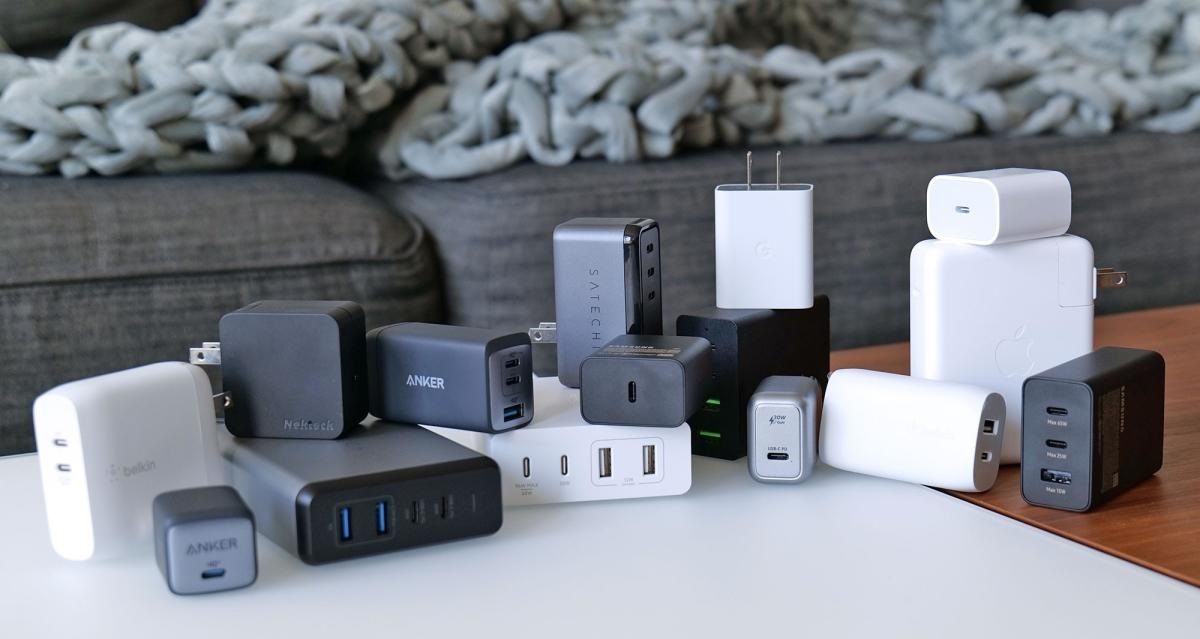Introduction
Welcome to the world of Android smartphones! These powerful devices have become an integral part of our lives, helping us stay connected, organized, and entertained. However, as time goes on, you may find that your once speedy Android phone has started to slow down. Don’t worry, though – there are several steps you can take to improve its performance and get it running smoothly again.
In this article, we will explore various methods to speed up your Android phone. These techniques range from simple optimizations to more advanced adjustments, all aimed at boosting your device’s speed and responsiveness. Whether you’re dealing with lagging apps, sluggish performance, or excessive memory usage, we’ve got you covered.
By following these tips, you’ll be able to streamline your Android phone’s operations, improve its efficiency, and enhance your overall user experience. Get ready to take control of your device and unleash its full potential!
Clear Cache
Over time, your Android phone accumulates temporary files and data from various apps and processes. This can clog up your device’s storage and impact its performance. Clearing the cache is a simple and effective way to free up space and speed up your phone.
To clear the cache on your Android phone, follow these steps:
- Go to Settings.
- Tap on Storage or Storage & USB.
- Select Cached Data.
- Tap on Clear Cache.
By clearing the cache, you’re essentially removing unnecessary files and data that are no longer needed. This can help improve app load times, reduce lag, and free up valuable storage space on your device.
It’s worth noting that clearing the cache will not delete any important data or settings from your apps. However, you may need to re-enter login credentials or re-download certain files after clearing the cache.
Make it a habit to regularly clear the cache on your Android phone, especially if you notice a decline in performance or available storage space. This simple maintenance task can go a long way in keeping your device running smoothly and efficiently.
Uninstall Unused Apps
One of the main reasons for a slow Android phone is having too many apps installed. Not only do unused apps take up valuable storage space, but they can also run in the background and consume system resources. To speed up your device, it’s essential to uninstall any apps that you no longer use or need.
To uninstall apps on your Android phone, follow these steps:
- Go to Settings.
- Tap on Apps & notifications or Applications.
- Select the app you want to uninstall.
- Tap on Uninstall.
- Confirm the uninstallation when prompted.
When deciding which apps to uninstall, consider those that you haven’t used in a long time or those that serve a similar purpose as other installed apps. Removing unnecessary apps not only frees up storage space but also reduces the clutter on your device, making it easier to navigate and improving overall performance.
If you’re hesitant about completely uninstalling certain apps, you can also disable them. Disabling an app will turn off its functions and prevent it from running in the background, without permanently removing it from your device. This allows you to reclaim some system resources without losing the app entirely.
Regularly reviewing and uninstalling unused apps is a good practice to keep your Android phone running smoothly. It not only optimizes performance but also ensures that you have sufficient storage space for the apps you do use frequently.
Disable or Remove Bloatware
When you purchase a new Android phone, it often comes preloaded with a variety of apps that you may not necessarily need or want. These preinstalled apps, commonly referred to as bloatware, can take up valuable storage space and slow down your device. Disabling or removing bloatware can help improve the performance of your Android phone.
To disable or remove bloatware on your Android phone, follow these steps:
- Go to Settings.
- Tap on Apps & notifications or Applications.
- Select the app you want to disable or remove.
- If the option is available, tap on Disable or Uninstall.
- Confirm the action when prompted.
Disabling a bloatware app will prevent it from running and consuming system resources, but it will still remain on your device. This is useful in case you want to reactivate or enable the app at a later time. However, if you’re certain that you won’t use the app and want to free up even more space, you can choose to uninstall it completely.
Removing bloatware can not only improve the performance of your Android phone but also help declutter the app drawer and make it easier to find the apps you do use on a regular basis. Additionally, by disabling or removing unnecessary apps, you reduce the risk of potential security vulnerabilities associated with outdated or unused software.
Keep in mind that while disabling or removing bloatware is generally safe, it’s always a good idea to research the app before taking any action. Some preinstalled apps may be essential for the functioning of your device or have dependencies on other system components. Exercise caution and proceed with care when disabling or removing apps to avoid any undesired consequences.
Update to the Latest Software Version
Keeping your Android phone’s software up to date is crucial for optimal performance and security. Software updates often include bug fixes, performance enhancements, and new features that can help improve the speed and functionality of your device. Therefore, it’s important to regularly check for and install the latest software version.
To update your Android phone’s software, follow these steps:
- Go to Settings.
- Tap on System or About phone.
- Select Software updates or System updates.
- If an update is available, follow the on-screen instructions to download and install it.
It’s recommended to connect your Android phone to a stable Wi-Fi network before initiating a software update, as updates can be large in size. It’s also advisable to ensure that your device is adequately charged or connected to a power source to prevent any interruptions during the update process.
By updating to the latest software version, you not only benefit from performance improvements but also gain access to new features and enhancements. These updates are designed to optimize the overall user experience and address any known issues or vulnerabilities.
In addition to system updates, it’s also important to keep your installed apps up to date. Developers regularly release updates to their apps, which often contain bug fixes and performance optimizations. By updating your apps, you ensure that you’re running the latest, most stable versions, which can positively impact your device’s speed and efficiency.
Make it a habit to check for software updates on your Android phone and install them promptly. This proactive approach will not only keep your device running smoothly but also ensure that you’re benefiting from the latest advancements and security patches.
Limit Background Processes
Background processes running on your Android phone can consume system resources, such as CPU power and memory, even when you’re not actively using the apps. This can result in slower performance and reduced battery life. By limiting the number of background processes, you can optimize your device’s speed and battery efficiency.
To limit background processes on your Android phone, follow these steps:
- Go to Settings.
- Tap on Developer options. (If you don’t see this option, go to About phone and tap on Build number multiple times until you see a message confirming that Developer options have been enabled.)
- Scroll down and look for the option called Limit background processes or Background process limit.
- Select the desired limit from the available options (e.g., No background processes, 1 or 2 processes, or Standard limit).
By choosing a lower limit for background processes, you’re reducing the number of apps and services that can run simultaneously in the background. This allows your device to allocate more resources to the currently active app, resulting in a smoother and more responsive user experience.
It’s important to note that limiting background processes too much may affect the functionality of certain apps that rely on background processes for background updates, notifications, or location services. Therefore, it’s recommended to experiment with different limits and observe the impact on your device’s performance before settling on a specific setting.
In addition to manually limiting background processes, Android also offers options to optimize battery usage, which can indirectly limit background processes. You can find these options in your device’s battery settings or by searching for battery optimization in the settings menu. By enabling battery optimization, you can restrict certain apps from running in the background when your device is idle or when the battery level is low.
Managing background processes is an effective way to boost the performance and battery life of your Android phone. By prioritizing and controlling which apps run in the background, you can optimize resource allocation and ensure a smoother and more efficient user experience.
Adjust Animation Settings
Animations add visual flair and transitions to the user interface of your Android phone. While they enhance the overall aesthetic appeal, excessive animation settings can also contribute to a perceived sluggishness in device performance. By adjusting animation settings, you can reduce the animation duration and speed up the navigation and responsiveness of your Android phone.
To adjust animation settings on your Android phone, follow these steps:
- Go to Settings.
- Tap on About phone or System.
- Scroll down and tap on Build number multiple times until a message appears indicating that Developer options have been enabled. (If you already enabled Developer options in a previous section, you can skip this step.)
- Go back to the main Settings menu and tap on Developer options.
- Look for the following three animation-related settings: Window animation scale, Transition animation scale, and Animator duration scale.
- Tap on each setting and select Animation off or Animation scale 0.5x to reduce the duration of the animations.
By adjusting the animation settings to a lower scale, you’re essentially reducing the time it takes for animations to occur. This can result in faster app switching, smoother scrolling, and improved overall responsiveness of your Android phone.
It’s important to note that completely disabling animations or setting them to a very low scale may make transitions appear abrupt or less visually appealing. It’s recommended to experiment with different animation settings and find a balance that suits your preferences and device performance.
In addition to adjusting animation settings, you can also explore other options in the Developer options menu, such as enabling the option called Force GPU rendering or enabling the option called Disable HW overlays. These settings can have varying effects on device performance, so it’s advisable to research and experiment before making any changes.
By fine-tuning animation settings, you can optimize the visual experience on your Android phone and enhance its responsiveness. Whether you prefer faster transitions or a more polished aesthetic, having control over animation settings allows you to personalize your device’s performance to match your preferences.
Disable Live Wallpapers
Live wallpapers may be visually appealing, but they can also consume significant system resources, including CPU power and battery life, which can impact the overall performance of your Android phone. By disabling live wallpapers and opting for static wallpapers, you can reduce resource usage and improve the speed and efficiency of your device.
To disable live wallpapers on your Android phone, follow these steps:
- Long-press on the home screen or go to the wallpaper settings (this may vary depending on your device model and Android version).
- Tap on Wallpapers or Wallpaper settings.
- Select a static wallpaper from the available options.
- Tap on Set Wallpaper or Apply to set it as your wallpaper.
By replacing live wallpapers with static images, your device no longer needs to constantly render and update dynamic backgrounds, resulting in improved performance and reduced power consumption. It’s a simple and effective way to enhance the responsiveness and efficiency of your Android phone.
If you still want a visually appealing home screen without the performance impact of live wallpapers, you can consider using static wallpapers with subtle patterns or high-resolution images. These can still provide an aesthetically pleasing experience while minimizing resource usage.
It’s worth noting that disabling live wallpapers may not have a noticeable impact on devices with powerful hardware or newer Android versions. However, if you’re experiencing performance issues or wish to maximize your device’s efficiency, it’s worth considering this adjustment.
Remember, personalization is key when it comes to your Android phone. If live wallpapers are important to you and you’re willing to accept the potential trade-off in performance, feel free to keep using them. Finding the right balance between aesthetics and functionality is a matter of individual preference.
Use a Lightweight Launcher
The launcher is the interface that allows you to interact with your Android phone’s home screen, app drawer, and widgets. Some launchers are known to be resource-intensive, consuming valuable system memory and slowing down your device. By switching to a lightweight launcher, you can optimize the performance and responsiveness of your Android phone.
There are several lightweight launchers available on the Google Play Store that offer a simplified and efficient user experience. These launchers are designed to have a smaller memory footprint and prioritize functionality over extravagant visual effects.
To use a lightweight launcher on your Android phone, follow these steps:
- Open the Google Play Store.
- Search for lightweight launchers (e.g., Nova Launcher, Microsoft Launcher, Evie Launcher).
- Select a launcher from the search results.
- Tap on Install to download and install the launcher.
- Once installed, press the home button on your Android phone.
- Select the newly installed launcher from the available options.
By using a lightweight launcher, you can enjoy a streamlined user interface and improved performance. These launchers often come with customizable options, allowing you to tweak various settings according to your preferences.
Additionally, lightweight launchers may offer features such as app drawers with built-in app search functionality, gesture-based navigation, and the ability to hide or lock apps. These features can enhance your productivity and make it easier to access your frequently used apps and widgets.
While switching to a lightweight launcher can positively impact your device’s performance, it’s important to note that personalization options and visual effects may be more limited compared to heavier, feature-rich launchers. However, the trade-off is usually well worth it in terms of responsiveness and overall user experience.
Experiment with different lightweight launchers to find the one that suits your needs and preferences. Remember to uninstall any previously installed launchers to avoid unnecessary resource consumption. Enjoy the improved speed and efficiency that a lightweight launcher brings to your Android phone.
Delete Unnecessary Widgets
Widgets are a convenient and interactive way to access information and perform certain tasks directly from your Android phone’s home screen. However, having too many widgets can clutter your home screen and consume system resources, resulting in decreased performance. By deleting unnecessary widgets, you can optimize your device’s speed and make your home screen more organized and efficient.
To delete widgets from your Android phone’s home screen, follow these steps:
- Long-press on the widget you want to remove.
- Drag the widget towards the top or bottom of the screen (depending on your device) where a Remove or Delete option appears.
- Release the widget when it’s positioned over the remove option.
It’s important to assess which widgets you truly use and need on your home screen. Consider removing widgets that provide redundant information or that you rarely interact with. Not only will this free up valuable space on your home screen, but it will also reduce the strain on your device’s resources.
Remember that widgets continuously update and consume resources, especially those with real-time information or constantly refreshing content. By reducing the number of active widgets, you’ll notice improved responsiveness and better overall performance on your Android phone.
If you’re hesitant about completely removing a widget, you can try disabling it first. Disabling a widget will stop it from updating and consuming resources, but it will still appear on your home screen. This way, you can easily re-enable it if needed, without losing your widget’s settings or configurations.
Take the time to review your home screen and evaluate the value and usefulness of each widget. Consider the balance between convenience and resource consumption, and only keep the widgets that truly enhance your productivity and provide necessary information at a glance.
Don’t be afraid to experiment with your home screen layout and try different combinations of widgets to find the optimal setup for your needs. Remember, a clutter-free and well-organized home screen can greatly enhance your Android phone’s performance and user experience.
Use SD Card for App Storage
Running out of internal storage space on your Android phone can impact its performance and hinder your ability to install new apps or update existing ones. One way to alleviate this issue is by utilizing an SD card as additional storage for your apps. By moving apps to the SD card, you can free up valuable internal storage space and improve the overall performance of your device.
To use the SD card for app storage on your Android phone, follow these steps:
- Insert a compatible SD card into your device.
- Go to Settings.
- Tap on Apps & notifications or Applications.
- Select the app you want to move to the SD card.
- Tap on Storage.
- If available, tap on Change or Move to SD card.
- Follow the on-screen instructions to move the app to the SD card.
It’s important to note that not all apps can be moved to the SD card. Some system apps or apps marked as “Device admin” may not have the option to be relocated. Additionally, certain essential parts of an app still need to reside on the internal storage for proper functioning. However, moving compatible apps to the SD card can significantly reduce the strain on your device’s primary storage.
When using an SD card for app storage, it’s crucial to choose a high-quality and fast SD card with sufficient storage capacity. Class 10 or UHS-I cards are recommended for optimal performance. It’s also important to regularly check the available storage space on both the internal storage and SD card to prevent running out of space.
Keep in mind that removing or unmounting the SD card from your device may cause the apps stored on it to become inaccessible. It’s advisable to use caution and avoid removing the SD card while the apps are actively being used or when the phone is powered on.
By utilizing the SD card as additional app storage, you can effectively increase the available space on your Android phone and improve its performance. This is especially useful for budget devices with limited internal storage capacity.
Remember to periodically review and manage your apps, ensuring that you only keep the ones you truly need. Uninstalling unused apps and moving others to the SD card will not only optimize your device’s performance but also help you maintain an organized and efficient app ecosystem.
Clear App Data and Cache
Over time, apps on your Android phone accumulate data and cache files that can consume storage space and affect their performance. Clearing app data and cache regularly can help free up space, improve app responsiveness, and ensure smooth operation. By doing so, you can optimize the performance of your device and enhance the user experience.
To clear app data and cache on your Android phone, follow these steps:
- Go to Settings.
- Tap on Apps & notifications or Applications.
- Select the app you want to clear data and cache for.
- Tap on Storage.
- Tap on Clear data to remove all app data, including settings and preferences.
- Tap on Clear cache to remove temporary files.
- Confirm the action when prompted.
Clearing app data should be approached with caution, as it will remove all app-related information, including login credentials and personalized settings. You may need to reconfigure the app or log in again after clearing the data. It’s recommended to only clear data for apps that are experiencing issues or taking up significant space.
Clearing the app cache, on the other hand, is generally safe and can provide immediate benefits. Cached files are temporary files that apps create to improve performance and reduce data usage. However, over time, these files can become bloated and impact the app’s responsiveness. Clearing the cache removes these unnecessary files, allowing the app to start fresh and operate more efficiently.
It’s worth noting that some apps offer their own clear cache option within their settings menu. If available, it’s recommended to utilize this feature for specific apps, as it may provide additional functionality or clear app-specific cache files.
Regularly clearing app data and cache is a good maintenance practice to keep your Android phone running smoothly. It’s especially helpful for apps that tend to accumulate large amounts of data over time, such as social media apps or web browsers. By periodically cleaning up app data and cache, you can ensure that your device remains responsive and storage space is efficiently utilized.
Restart or Reset Your Phone
When you encounter persistent performance issues or your Android phone becomes unresponsive, a simple restart can often resolve the problem. Restarting your phone clears temporary files, refreshes system processes, and can help improve overall performance. If a restart doesn’t fix the issue, a factory reset may be necessary as a last resort to return your phone to its original state.
To restart your Android phone, follow these steps:
- Press and hold the power button on your device.
- Select Restart or Reboot from the power options menu that appears.
- Wait for your phone to shut down and then power it back on.
Restarting your phone can help resolve minor software glitches, clear out temporary issues in memory, and refresh system resources. It’s often the first troubleshooting step recommended by support technicians. Make it a habit to restart your phone periodically to maintain optimal performance.
If you’re experiencing persistent and severe issues with your Android phone, a factory reset may be necessary. A factory reset erases all personal data, settings, and apps on your device, restoring it to its original state when you first received it. Before performing a factory reset, remember to back up any important data or files to avoid permanent loss.
To perform a factory reset on your Android phone, follow these steps:
- Go to Settings.
- Tap on System or General Management.
- Select Reset or Reset options.
- Choose Factory data reset or Erase all data (these options may vary based on your device model).
- Confirm the action and enter your PIN or password if prompted.
- Follow the on-screen instructions to complete the reset process.
A factory reset should only be used as a last resort when other troubleshooting methods fail to resolve the issue. It can be effective in resolving severe performance problems, software conflicts, and persistent errors. However, be aware that a factory reset will erase all data on your phone, so it’s important to have a backup in place.
Before opting for a factory reset, you may also consider seeking advice from a professional or contacting the support team of your device manufacturer for guidance on specific issues you’re experiencing.
In summary, restarting your Android phone can often resolve minor performance issues, while a factory reset can be used as a last resort for more severe problems. It’s important to weigh the benefits against the potential loss of personal data and ensure you have a backup before performing a factory reset.
Delete Photos and Videos
Photos and videos are among the biggest storage hogs on your Android phone. As you capture memories and record precious moments, these media files can quickly accumulate and consume a significant amount of storage space. Deleting unnecessary photos and videos not only frees up storage but also helps improve the overall performance of your device.
To delete photos and videos on your Android phone, follow these steps:
- Open the Gallery app or Photos app on your device.
- Navigate to the album or folder where the photos or videos you want to delete are located.
- Long-press on a photo or video to enter selection mode.
- Select additional photos or videos you want to delete by tapping on them.
- Tap on the trash can or delete icon to remove the selected items.
- Confirm the deletion when prompted.
When deciding which photos and videos to delete, consider removing duplicates, blurry or low-quality shots, and any files that are no longer relevant or meaningful to you. It’s important to make sure you have backups of any important files before deleting them to avoid permanent loss.
In addition to manually deleting media files, you can also take advantage of cloud storage services or backup apps to safely store your photos and videos and free up space on your device. These services allow you to upload your files to the cloud, keeping them accessible while freeing up local storage.
Regularly reviewing your photo and video collection and deleting unneeded files is a good practice to maintain an organized and efficient storage system on your Android phone. Not only will this optimize performance, but it will also make it easier to find and enjoy the media files that matter most to you.
Remember to also check other apps that may be storing photos and videos, such as messaging apps, social media apps, or file-sharing apps. These apps often retain a copy of media files you’ve sent or received, and it’s a good idea to clear those as well to free up additional space.
Deleting photos and videos is a necessary step in managing the storage on your Android phone. By regularly decluttering your media collection, you can ensure that you have ample space for new memories and keep your device running smoothly and efficiently.
Delete Old Messages and Call Logs
Messages and call logs can accumulate over time, taking up storage space on your Android phone. Deleting old messages and call logs not only helps free up storage but also improves the performance and organization of your device. By removing unnecessary conversations and call records, you can optimize the efficiency of your Android phone.
To delete old messages and call logs on your Android phone, follow these steps:
- Open the Messaging app or the Phone app on your device.
- Navigate to the conversation or call log you want to delete.
- Long-press on a message or call entry to enter selection mode.
- Select additional messages or call records you want to delete by tapping on them.
- Tap on the trash can or delete icon to remove the selected items.
- Confirm the deletion when prompted.
When deciding which messages and call logs to delete, consider removing conversations with old or irrelevant information, spam messages, and call records that you no longer need. It’s advisable to keep important or sentimental messages and call logs backed up before deleting them to avoid permanent loss.
If you frequently send and receive multimedia messages (MMS) with photos, videos, or audio files, it’s worth checking your MMS settings and limiting the retention period. By reducing the amount of time MMS messages are stored on your device, you can free up additional storage space.
In addition to manual deletion, you can automate the process of deleting old messages by adjusting your messaging app’s settings. Some apps allow you to set message retention periods or automatically delete messages after a certain period of time.
Call log management varies depending on the phone model and the default phone app. Some devices provide options to clear call logs by specific dates or delete all call records at once. Explore the settings of your phone app to find the necessary options for managing call logs efficiently.
Regularly deleting old messages and call logs not only optimizes the performance of your Android phone but also enhances privacy and declutters your communication history. By keeping your messaging and call logs streamlined, you can easily find and focus on the most relevant and recent conversations.
Remember to also check for any other messaging or communication apps you have installed on your device, as they may retain their own message history and call logs separately. Deleting unnecessary data from these apps can further contribute to a more efficient and organized Android phone experience.
Optimize Battery Usage
Battery life is a critical aspect of any Android phone’s performance. To ensure that your device lasts throughout the day and functions optimally, it’s important to optimize battery usage. By employing certain strategies and adjusting settings, you can extend the battery life and enhance the overall efficiency of your Android phone.
Here are some tips to help optimize battery usage on your Android phone:
- Reduce screen brightness: Dimming the screen brightness or using the auto-brightness feature can significantly impact battery life. Lower the brightness level to a comfortable, yet power-saving, setting.
- Enable battery saver mode: Activate the built-in battery saver mode, which helps conserve battery power by reducing performance, limiting background activities, and minimizing system animations.
- Manage app permissions: Review and manage the permissions granted to apps on your device. Some apps continuously run in the background, consuming valuable battery life. Restricting unnecessary permissions can help extend battery usage.
- Disable unnecessary connectivity features: Turn off Wi-Fi, Bluetooth, and GPS when not in use. These features consume power by constantly scanning for networks or using location services.
- Control app background refresh: Limit or disable background app refresh for apps that don’t require real-time updates. This prevents apps from constantly accessing the internet and consuming battery power.
- Minimize push email and sync frequency: Reduce the frequency of email and sync updates to conserve battery. Manual syncing or increasing update intervals can help prolong battery life.
- Use battery optimization tools: Many Android phones have built-in battery optimization tools or power management settings. These features provide options to optimize background processes, restrict app usage, and conserve power.
- Enable adaptive battery or battery optimization: Android versions with adaptive battery or battery optimization features use machine learning to analyze your app usage patterns and optimize battery performance accordingly. Enable these features in your device settings.
- Keep your device software up to date: Regularly update your Android phone’s software to benefit from battery optimization improvements and fixes provided by the device manufacturer.
- Monitor battery usage: Check the battery usage settings on your device to identify apps or processes that consume excessive power. This helps you identify and manage power-hungry apps more effectively.
Implementing these battery optimization techniques can significantly improve your Android phone’s battery life and overall performance. It’s important to strike a balance between battery saving measures and the functionality you require from your device. Experiment with settings to find the optimal balance for your needs.
Lastly, it’s worth mentioning that battery performance can degrade over time due to regular usage and aging of the battery. If you notice a significant decline in battery life or unexpected battery drain, it may be time to consider replacing the battery or seeking professional assistance.
Backup and Factory Reset
Backup and factory reset are two important measures that can help optimize the performance of your Android phone and provide a fresh start when the device experiences persistent issues. Taking regular backups ensures that your personal data, settings, and app configurations are safely stored, while a factory reset erases all data and restores your phone to its original state.
To back up your Android phone, follow these steps:
- Go to Settings.
- Tap on System or General Management.
- Select Backup & Restore or Backup & Reset.
- Enable the backup options you prefer, such as backing up app data, settings, and multimedia content to Google Drive or other cloud storage services.
- Tap on Back Up Now and wait for the backup process to complete.
Regularly backing up your Android phone is essential to ensure that your data is safe and recoverable in case of accidental loss, device failure, or when performing a factory reset. It allows you to restore your data, apps, and settings to a new device or after a factory reset, minimizing the disruption to your digital life.
To perform a factory reset on your Android phone, follow these steps:
- Go to Settings.
- Tap on System or General Management.
- Select Reset or Reset options.
- Choose Factory data reset or Erase all data (these options may vary based on your device model).
- Confirm the action and enter your PIN or password when prompted.
- Follow the on-screen instructions to complete the reset process.
Performing a factory reset should be approached with caution, as it erases all personal data, apps, and settings on your device. It’s crucial to have a backup of your important data before proceeding with a factory reset to avoid permanent loss.
A factory reset can be helpful when your Android phone experiences persistent performance issues, app conflicts, or if you’re preparing to sell or give away your device. It provides a clean slate, removing any clutter or problematic data that may be affecting the device’s performance.
After a factory reset, you can restore your data and settings by following the initial setup prompts and choosing to restore from a backup. This will ensure that your apps, configurations, and personal data are retrieved and applied to your device.
Remember, a factory reset should be considered as a last resort when other troubleshooting methods have failed. It’s always recommended to seek guidance from your device manufacturer or consult with a professional if you’re unsure about performing a factory reset.
By taking regular backups and performing factory resets when necessary, you can maintain the optimal performance and efficiency of your Android phone while safeguarding your valuable data.









